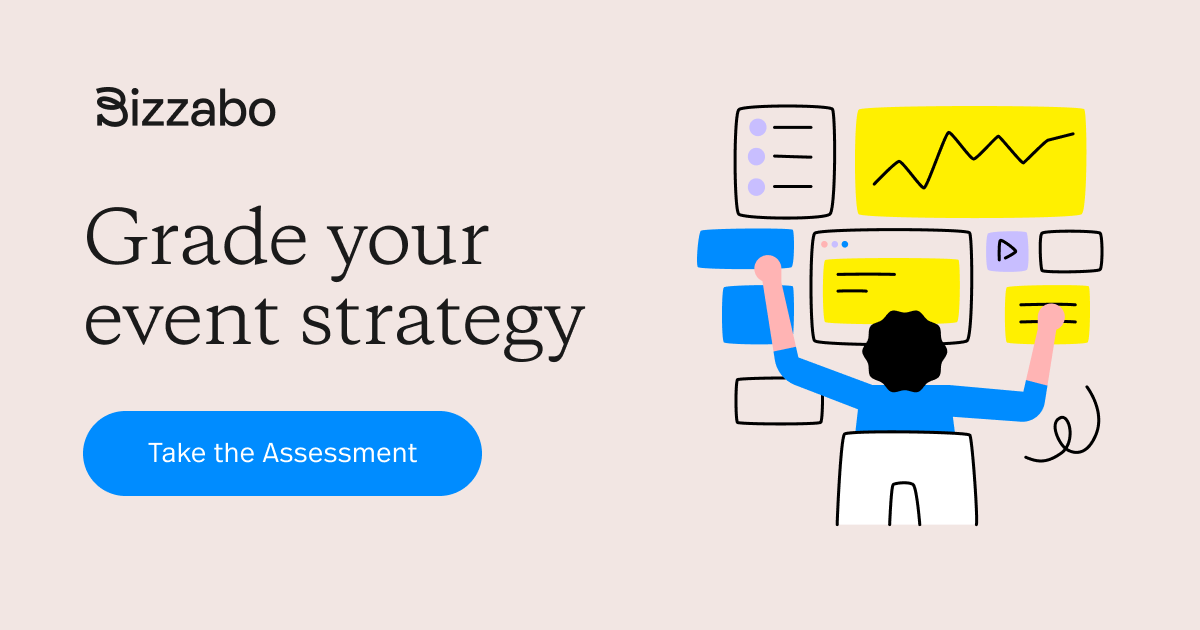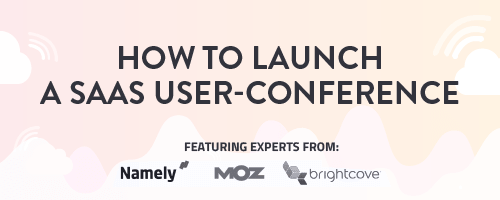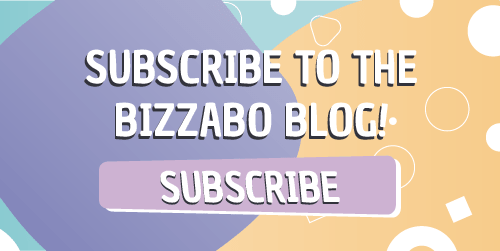How Events Fit Into a Multi-touch Marketing Strategy


Trying to grab the attention of your potential customers? Learn how to use events as a part of your multi-touch marketing strategy.
Let’s face it – we live in a noisy world. With such an overflow of online messaging and digital content flooding the senses, it can be difficult to grab the attention of your target audience. These conditions, coupled with advancing technology, have given rise to multi-touch marketing which aims to capture the consumer’s attention through a multitude of channels.
One channel that is often underused within multi-touch strategies is event marketing.
Using live events in conjunction with other marketing channels can help bring more of a personal touch to an otherwise overly-digital experience. When strategically placed as part of the multi-touch marketing funnel, live events help to accelerate the journey towards your main business objectives.
This blog post will help you to understand multi-touch marketing through the lens of an event strategy.
What is a Multi-touch Marketing Strategy?
To more clearly define multi-touch marketing, let’s use an analogy. In soccer, each player must perform well in order for the team to win. While some soccer teams may have star players, its the process of passing the ball down the field that ultimately results in a goal. Multi-touch marketing is all about passing the ball.
Some of your marketing channels may be star players in your marketing mix, but when you use different marketing channels together, it’s a lot easier to score that goal. These channels work together as a team to achieve the desired business objectives, whether that be closing new business, retaining customers, or spreading brand awareness.
Here is an example of how a multi-touch strategy unfolds. Let’s imagine a prospect visits your company website, downloads an ebook, is enrolled in a segmented email campaign, tunes into a webinar, visits your company booth at an event, and finally requests a demo.
In this example, the prospect went through multiple marketing touch points before turning into a sales opportunity. Each touch point played a role in converting the lead and there’s no question that events played a role during this journey. The key is to understand what types of events should be used at which points of the consumer journey in order to maximize effectiveness.
According to the 2018 Event Marketing Benchmarks and Trends report, the majority of marketers believe that events comprise the strongest channel for driving business goals.
What is Event Marketing?
In general, event marketing is a strategy that utilizes in-person interactions in order to achieve specific business objectives. The type of event strategy depends on the end goal. Some examples of event marketing include exhibiting at trade show booths, hosting a sales acceleration dinner, creating a user conference, and executing an event roadshow. Each of these events have their own strengths and can be leveraged to pinpoint a specific need within the larger multi-touch marketing strategy.
5 Examples of Incorporating Events into Multi-touch
Events must be strategically placed throughout the multi-touch funnel in order for each one to be most effective. The below image helps to illustrate how different types of events can fit into your funnel

Of course event types are not limited to these specific funnel stages. Most events can be modified to fit the desired end goal.
Below are some suggestions for how you can use different events to serve different business objectives.
1) Experiential Events – The Economist “Burger” Truck

Experiential marketing is ideal for spreading general awareness of your company brand or product. Sometimes experiential events do not directly relate to the company’s product but rather focus on the brand or values they strive to represent. In the case for The Economist, their non-meat burger food truck helped to spread awareness on the effects of meat on the environment.
In addition to educating people on an issue that aligns with their brand, The Economist used this as an opportunity to grow their email list. After having a sample of the meatless burgers, people were asked if they’d like to subscribe the publication’s weekly emails.
The way that The Economist leveraged this event to spread awareness on a relevant issue while also collecting new contacts is a prime example of how an event can be implemented to optimize the top of the multi-touch marketing funnel.
2) Roadshow – SAP Omnichannel Master Class

Another event strategy that can be used for top of the funnel initiatives is the event roadshow. Often times roadshows are not meant to close new business but to educate attendees. In the case of SAP’s annual Omni-channel Master Class roadshow, the objective was to educate attendees on how omni-channel strategies relate to all aspects of business including sales, marketing, and customer retention.
The roadshow took place in countries across the Asia Pacific such as Japan, China, Malaysia, and India. By focusing on providing quality content to attendees instead of pitching their product, SAP was able to establish themselves as industry thought leaders and in doing so, planting seeds that may eventually grow into new business opportunities.
You may also be interested in these other B2B event marketing ideas.
3) Trade Show Exhibitions – Bizzabo

Exhibiting at trade shows is more of a middle-of-the-funnel marketing initiative because you are engaging with people who have buying intent. By design, trade shows are meant to facilitate vendors with buyers so it is important to tailor your exhibiting strategy to meet this goal.
The above image shows an example of the Bizzabo team exhibiting at a trade show and demoing the Bizzabo product for attendees. The booth sign and video are both meant to clearly communicate the product’s value so that attendees immediately understand how they can benefit from the platform.
Optimizing your booth to grab the attention of attendees is crucial for generating sales leads that will eventually close.
You may also be interested in these event lead generation strategies.
4) Sales Acceleration Dinners – Radius

While exhibiting at an events is meant for generating early stage leads, intimate dinners are ideal for pushing later stage leads down the funnel.
These smaller events, known as sales acceleration dinners, are meant to do just that. Inviting prospects to an exclusive event may be just the kind of individualized attention they need to become a client. Often times organizations will also invite existing customers to these dinners to mingle with the prospects and give positive endorsements on an organization’s behalf.
Radius, a B2B business intelligence platform, hosted a VIP dinner during the week of Dreamforce, one of the largest software conferences in the world. The guest list was invite-only and gave key prospects access to C-level executives to help accelerate the pipeline.
5) User Conferences – AWS re:Invent

While user conferences are large enough to address multiple parts of a multi-touch strategy, they are particularly effective for delighting and retaining customers. These large conferences are meant to announce new product updates and educate the audience regarding industry best practices that will help with their specific business goals.
One way you are able to show appreciation to your users is by letting them take the stage. For Amazon Web Service’s annual re:Invent conference, AWS clients are invited to speak to attendees about how they use AWS products and general best practices. By giving them speaking opportunities, AWS helps their clients to feel empowered throughout the event, creating a feeling of partnership as opposed to a company-customer relationship. A user conference is, by definition, all about the users so make sure you are spotlighting them throughout the event.
Interested in learning how to plan a user conference? Click the button below for a Webinar featuring event experts from leading brands.
4 Multi-touch Event Marketing Best Practices
Successfully implementing events into your multi-touch marketing strategy is not as simple as having the event. Keep in mind the following best practices to ensure that your event marketing efforts are resulting in the desired outcomes.
1) Set Event Goals Within the Larger Context
Now that we’ve established how live events play a role in multi-touch marketing, the key here is to maintain that big picture mindset. If events are only a piece of the larger marketing strategy, how will they compliment the other channels?
Let’s say that the end goal of a particular marketing campaign is to increase the number of new customers. For this objective, the event strategy should be to spread general awareness about your company to new prospects. Down the line, you may nurture them through email campaigns and offer free relevant content to further pique their buying interest.
But within the larger context of the marketing strategy of acquiring customers, event marketing in this example should focus on gathering new lead information so your events must be optimized for that goal. By understanding your events within bigger picture of a multi-touch campaign, you can be more intentional and strategic with your event strategy, ultimately resulting in a better outcome.
2) Crystallize Alignment Between Teams
Again, events must be understood within context of the main multi-touch plan. This means that you will have to communicate with the teams that are in charge of the other marketing channels your events will help supplement. When this is the case, clarify the goals of your event strategy to the relevant teams and articulate how it will impact the other teams’ metrics.
For example, if the event goal at hand is to collect leads and hand them over to the sales team post-event, clearly communicate the criteria with which you will be qualifying your leads and in what manner you will be handing them off. Also be receptive to the other teams’ suggestions as to how changing your event strategy will help them achieve their goals more effectively.
Being as communicative as possible when it comes to explaining your event strategy in relation to adjacent marketing functions will help ensure that everyone succeeds. This is what separates one-off event planning from big picture enterprise event marketing.
3) Utilize Multiple Channels for Event Promotion
Event marketing itself can be thought of as a microcosm of multi-touch marketing: Promoting an event should involve diversified marketing strategies. Use multiple channels such as paid digital advertising, organic search, content marketing, social media campaigns, and event email marketing to spread the word about your event. Applying multi-touch to your event marketing efforts will only magnify the desired results, whether that be increasing event registration or another business objective.
4) Quantify Event Performance
Accurate attribution is a huge part of proving the ROI of multi-touch marketing campaigns. In order to make this easier, each component of the multi-touch strategy must be measurable and quantifiable. Choose key metrics to measure the success of your event strategy so you can input it back into the ROI calculation of the entire multi-touch campaign. Definitively measuring event performance may seem like an elusive challenge, but that does not have to be the case.
Utilizing an all-in-one event management software that can integrate across other tools, such as marketing automation and CRM platforms, will make it much easier to measure event attribution. Quantifying event impact is surely an achievable task. All it requires is the right knowledge and tools for proper measurement.
For more on measuring the impact of events, read the Event Attribution Guide.
Key Takeaways
We’ve covered a lot of ground in this overview of multi-touch marketing through the lens of live events. Here are some takeaways:
- Understanding your event strategy within the larger context of a multi-touch campaign will help articulate your event goals and maximize impact
- A multi-touch marketing strategy is only as effective as its ability to be accurately measured. Make sure to attach the success of your event strategy with quantifiable KPIs.
- The type of event will depend on the stage of the multi-touch campaign. Be intentional with the stage you want your event to address.
Multi-touch marketing strategies are the only viable solution in an increasingly cluttered and digitally-dense world. By implementing events into the mix, this adds a personal touch to the campaign that can result in more effectively and efficiently reaching your business goals.
Looking to further expand your event marketing knowledge? Click below for more event content.





